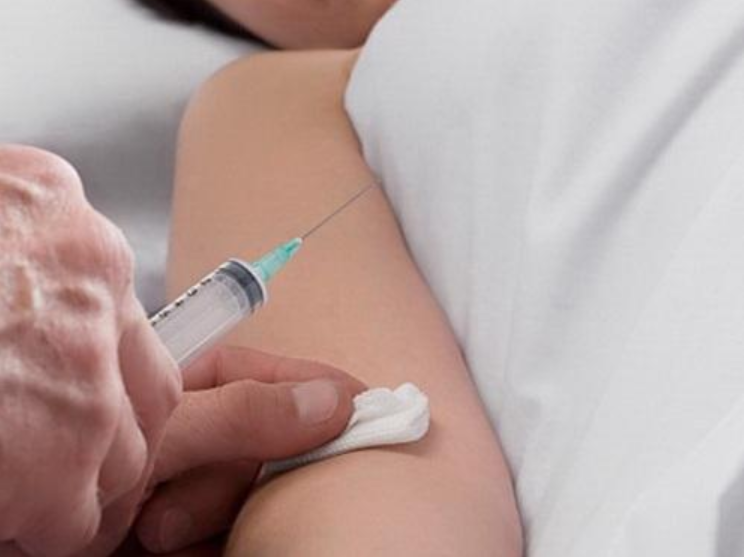Ogilvie syndrome: Acute colonic pseudo-obstruction
The article is professionally consulted by Master, Specialist II Phan Thi Minh Huong - Gastroenterologist - Department of Medical Examination & Internal Medicine - Vinmec Danang International General Hospital
Ogilvie syndrome (acute colon) is a rare condition that can cause unpredictable complications. Therefore, it is necessary to know the symptoms of the disease in order to timely detect and intervene in treatment.
1. What is Ogilvie syndrome?
Ogilvie syndrome, also known as acute colonic pseudo-obstruction, is a condition in which the colon is dilated for which no mechanical obstruction can be found. The syndrome is characterized by abnormalities affecting automatic, rhythmic muscle contractions (also called bowel movements) in the colon. This condition is named after the surgeon Sir William Heneage Ogilvie - first reported in 1948.
Ogilvie syndrome is very rare, can affect both men and women, of any age but is more common in people about 60 years old.
2. Symptoms of Ogilvie .'s syndrome
Typical symptoms of this syndrome include:
Nausea; Vomiting; Flatulence, bloating; Fever Constipation .
Nausea; Vomiting; Flatulence, bloating; Fever Constipation .

Buồn nôn và nôn mửa là triệu chứng điển hình của hội chứng Ogilvie
3. Causes of Ogilvie's Syndrome
Currently, the exact cause of Ogilvie syndrome is unknown. Usually, this condition is more common in people with serious medical conditions or recent surgery. The 3 most common conditions associated with Ogilvie syndrome are surgery (abdominal, orthopedic, neurological, cardiac, and urological surgery), infections (pneumonia and sepsis), and heart disease (especially myocardial infarction or congestive heart failure).
In addition, people with malignancy, kidney disease, severe lung disease, respiratory failure, metabolic disorders and severe electrolyte imbalance,... are also associated with Ogilvie syndrome. In addition, the use of certain drugs such as tranquilizers, anticholinergics, steroids and narcotics,... are also associated with the development of Ogilvie syndrome. At the same time, this syndrome can also be the result of abnormalities affecting the autonomic nervous system control of colonic motility.

Vẫn chưa xác định nguyên nhân chính xác gây ra hội chứng Ogilvie
4. Diagnosis of Ogilvie .'s syndrome
The diagnosis of Ogilvie syndrome (acute colonic pseudo-obstruction) is mainly through identification of characteristic symptoms, patient history, clinical evaluation, and specific laboratory tests.
Based on clinical symptoms alone, it is almost impossible to distinguish Ogilvie syndrome from mechanical obstruction. Therefore, a colonoscopy should be performed to rule out mechanical obstruction. An X-ray of the abdomen helps the doctor see an abnormally dilated colon, which shows abnormal air levels in the small intestine.
Alternatively, the doctor may use a water-soluble enema or computed tomography to rule out a mechanical obstruction (in the absence of air or dilation in the large intestine). During the procedure, a thin, flexible tube is inserted into the large intestine through the anus, dye is injected into the tube, and X-rays are taken to reveal a mechanical obstruction if present.
5. Treatment for Ogilvie's Syndrome
There is currently no specific treatment for Ogilvie syndrome. The main treatment options include: supportive therapy, medication, decompression, and surgery. The doctor will choose a specific treatment procedure depending on factors such as: disease progression, symptoms, bowel condition, age and general health of the patient,...
Determine causes of Ogilvie syndrome: If congestive heart failure, infection, respiratory failure, etc. cause the syndrome, the doctor will treat these conditions. If taking drugs that cause Ogilvie syndrome, the patient must stop taking the drug; Supportive therapy: Eating, drinking water, intravenous fluids to correct the imbalance of fluids and electrolytes in the body; use a nasogastric suction device to reduce the amount of air swallowed; Place a rectal tube to drain gas and stool. Patients should also stop taking drugs that can affect bowel movements; Neostigmine use: Intravenous neostigmine may decompress the colon in people with Ogilvie syndrome who have not responded to conservative treatments. Neostigmine improves gastrointestinal motility and the function of metabolizing food and other substances passing through the digestive tract. However, after successful treatment with neostigmine, patients may experience recurrent abdominal pain;

Tiêm tĩnh mạch neostigmine được thực hiện với bệnh nhân không đáp ứng điều trị bảo tồn
Colon decompression: By reducing pressure in the colon. This approach is for patients who have persistent abdominal pain and have not responded to other treatment options. In addition, some patients are also indicated to place a decompression tube in the colon to decompress, reduce the risk of disease recurrence; Surgery: Indicated for patients with signs of intestinal perforation or ischemia or unresponsive to other treatments. For patients without complications of intestinal perforation or ischemia, doctors usually recommend cecal surgery. For people with intestinal perforation or ischemia, the doctor may recommend surgery to remove part of the colon. Ogilvie syndrome (acute colonic pseudo-obstruction) can lead to many unpredictable complications. Therefore, when there are warning signs of disease, patients should go to the doctor as soon as possible for timely diagnosis and treatment. At the same time, it is necessary to maintain the habit of exercising, drinking plenty of water, avoiding lying in bed for a long time, ... to reduce the risk of this syndrome.
Để đặt lịch khám tại viện, Quý khách vui lòng bấm số HOTLINE hoặc đặt lịch trực tiếp TẠI ĐÂY. Tải và đặt lịch khám tự động trên ứng dụng MyVinmec để quản lý, theo dõi lịch và đặt hẹn mọi lúc mọi nơi ngay trên ứng dụng.
Bài viết này được viết cho người đọc tại Sài Gòn, Hà Nội, Hồ Chí Minh, Phú Quốc, Nha Trang, Hạ Long, Hải Phòng, Đà Nẵng.






